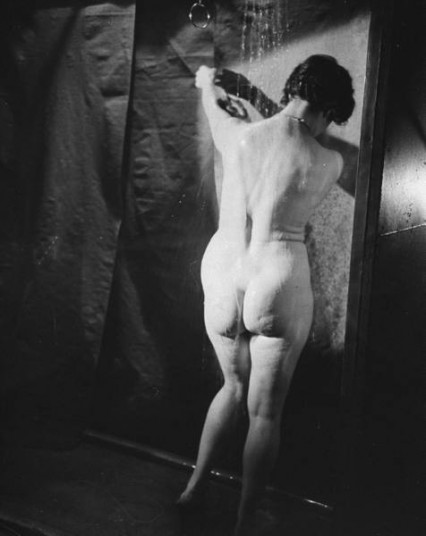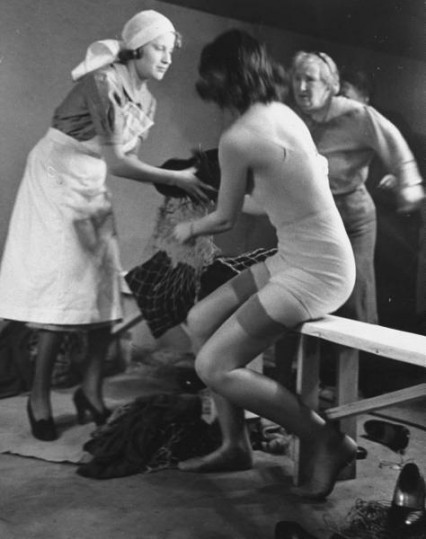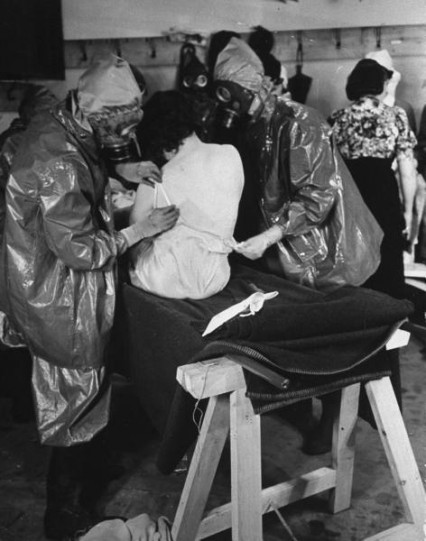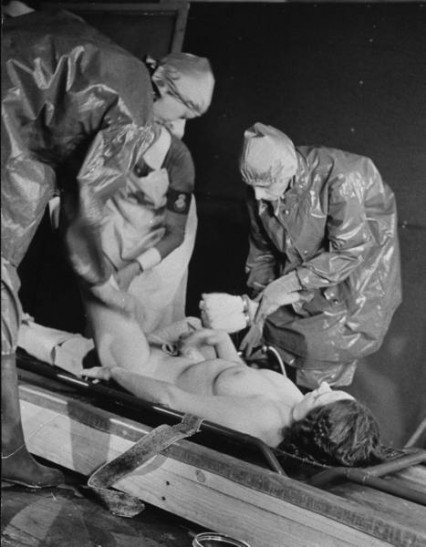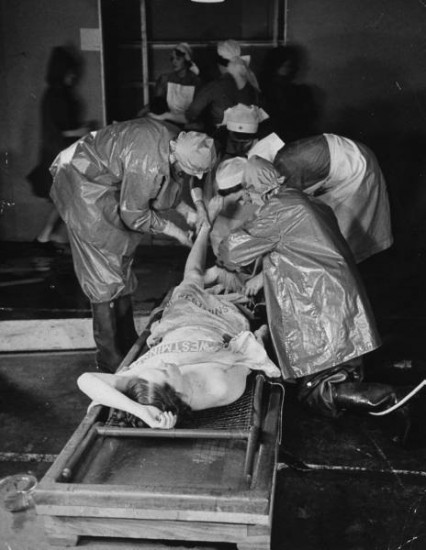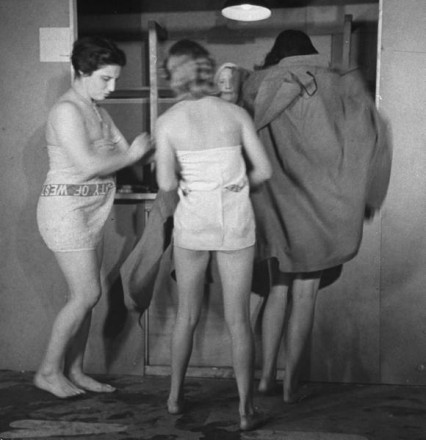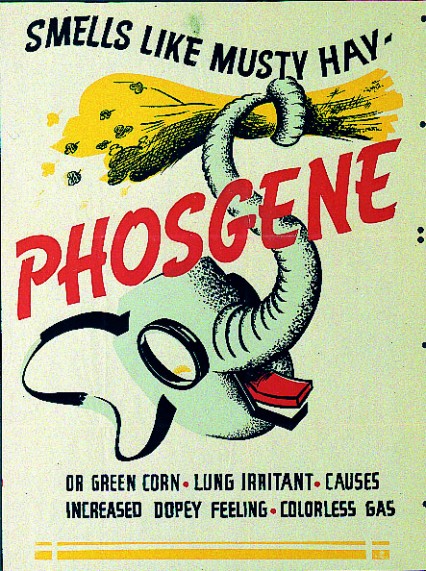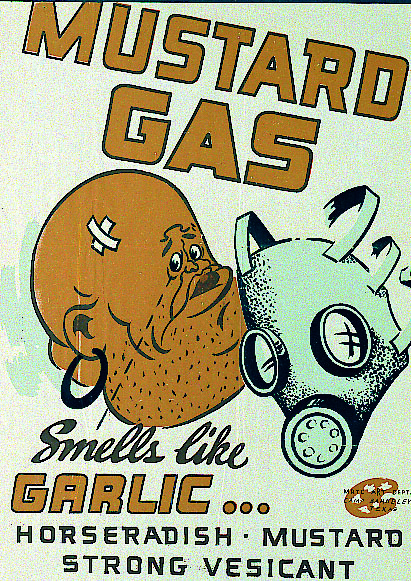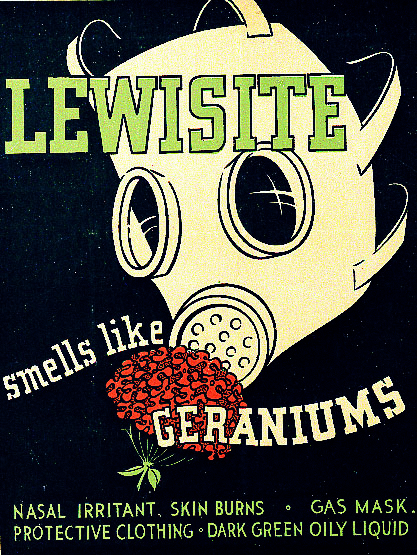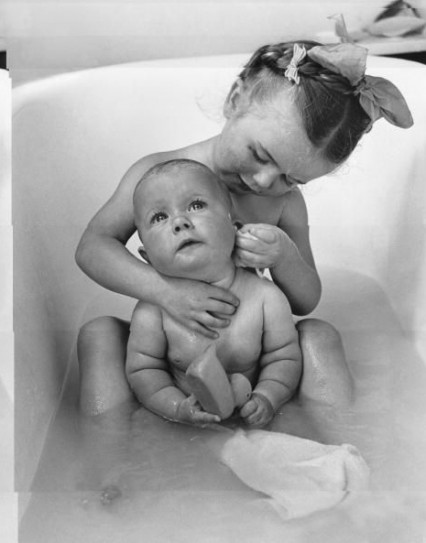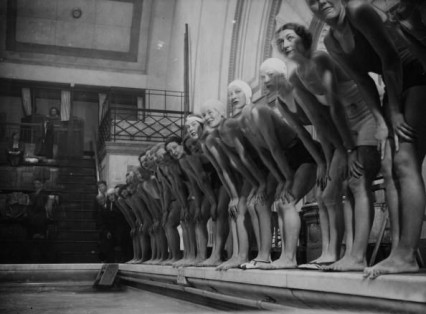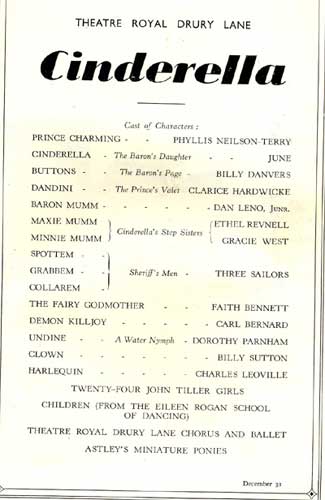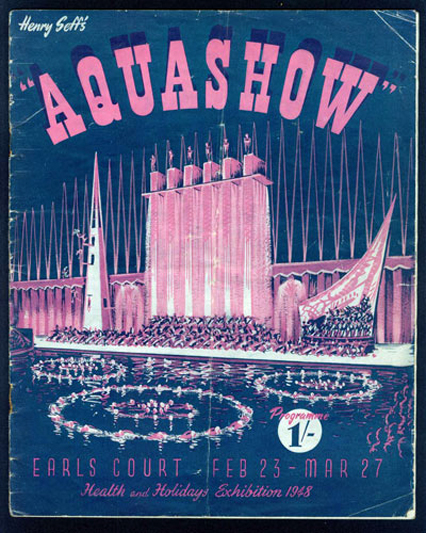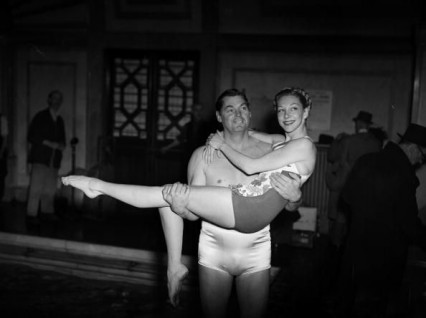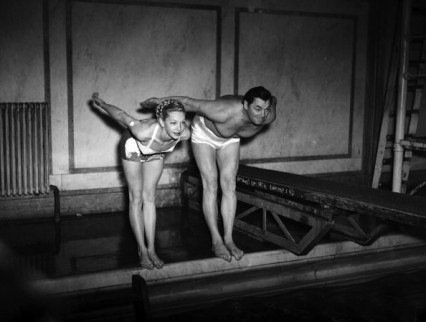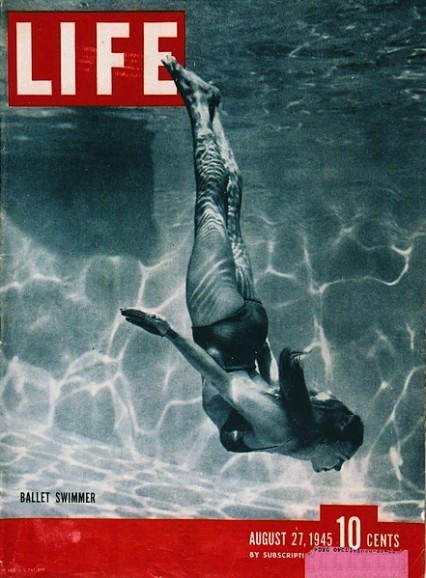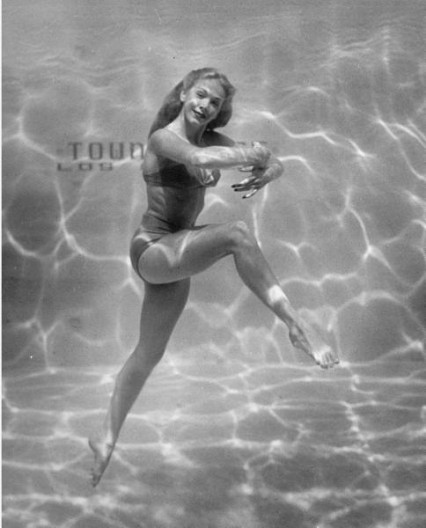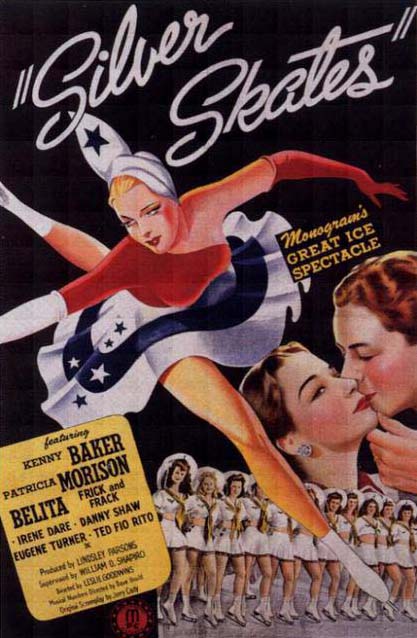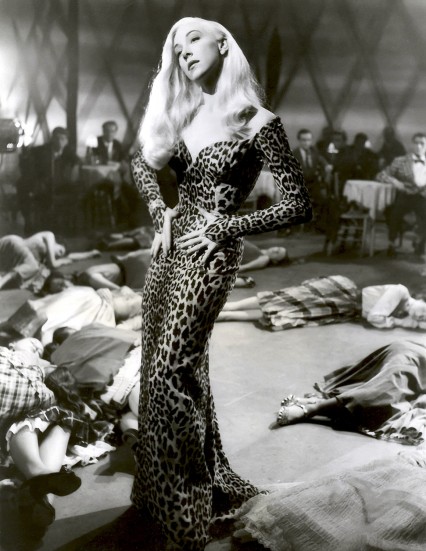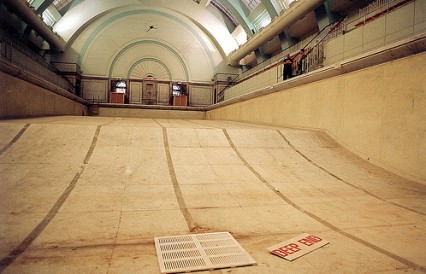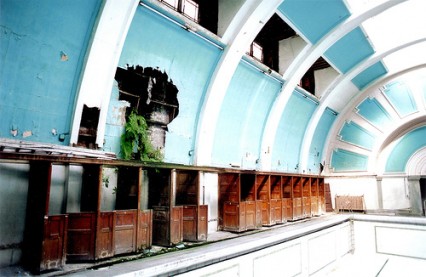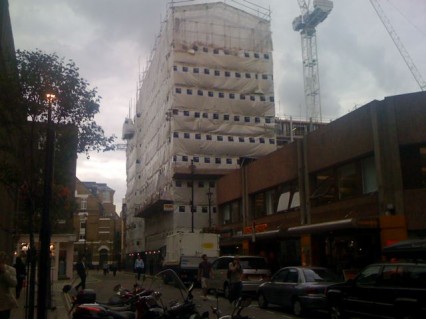Artists throughout centuries have often used mythical, historical or anthropological subjects as an excuse to portray the human nude, usually women of course. Carl Mydans – the Life magazine photographer – in rather an original way, used a WW2 Gas Decontamination centre in Westminster as his excuse. Great photos that they are.
As the inevitable war with Germany came closer, the British government was terrified with the thought of gas or chemical weapons being used. The horror of the First World War meant that most countries, including Britain and Germany, were signatories to the Geneva Gas Protocol of 1925 which banned the used of chemical and biological weapons (although not the stockpiling of them).
The huge distrust of a re-armed Germany, however, meant that gas decontamination centres were set up all over London before the war. Seven of them in Westminster alone. The centres were often built in swimming baths and the only one in the West End of London was at the Marshall Street Baths in Soho. In the end chemical weapons were left unused throughout the duration of the war. It was said that Hitler was briefly blinded by mustard gas in the First World War and for this reason he was reluctant to use them.
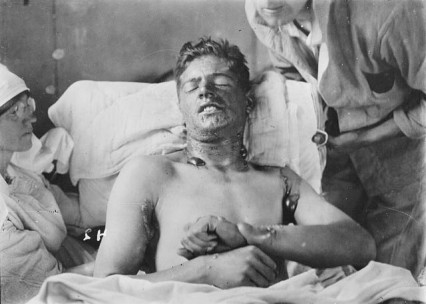
This was what all the fuss was about. A Canadian soldier from WW1 suffering from Mustard gas poisoning
The Marshall Street Baths, which are just about still there after they were closed down in 1997 by Westminster council, were built between 1928 and 1931. They were paid for by public funds for the general health and well-being of local people. The building consisted of a main pool lined with Sicilian marble and a ‘second class bath’ which measured 70ft by 30ft situated behind it. The whole complex had a child’s welfare centre, a public laundry and public bathing facilities.
When the baths were built a private tap or toilet was a luxury in Soho and private bathrooms were practically unheard of. Many Soho houses didn’t have electricity until well after the war and extraordinarily the last Soho house to convert from being gas-lit wasn’t until 1986.
Judith Summers in her book on Soho described children going for their weekly visit to the Marshall Street Hot Baths – a ritual that would have been the same for children all over the capital.
For many children this was not so much a chance to get clean as a social outing. Armed with their soap and towel, they would all set off together in a big gang, often at four o’clock on a Friday after school. Once inside, they would pay 2d or 3d for a Ladies or Gents Second Class bath. There were also First Class baths, which had the added luxury of providing the bather with a towel to stand on.
They waited on the old wooden benches until a bath was free and, after the attendant called out, ‘Next, please,’they would each go into a cubicle, while the woman set the small brass clock on the door and ran the bath from taps in the corridor outside. Her young customers were rarely satisfied with the temperature of the water, and their hackles still rise when they talk about her today.
Marshall Street baths was right in the middle of London’s theatre-land and was often used for rehearsals and training for any of the productions that used water. On November 4th 1934 the pantomime impresario Julian Wylie held auditions for a new huge production of Cinderella that was to be put on at Drury Lane theatre.
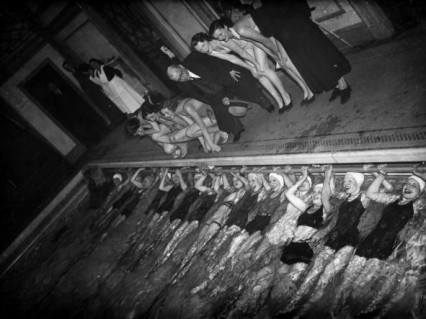
Julian Wylie, so as to professionally inspect the proposed chorus line, got as close to the edge as he dared. It was all to much though, and he died a few days later.
“It was a production worthy of Drury Lane. One of the scenes was a vast lake, into which marched an army of girls, entering the water and walking-down, down, down until they were entirely submerged and lost to sight beneath the surface of the lake. It was an exciting scene and provided some thrills at rehearsals too.”
Unfortunately, and after he had chosen all the chorus girls that were happy to get wet and just before the first performance of the pantomime, Wylie died. It was said, and I suppose there are worse ways of going, that he died as a result of an addiction to large quantities of ice-cream. I kid you not.
In 1948 more rehearsals took place at the Marshall Street baths, this time for a massive production that was to be put on at Earls Court called the Aqua-show. It starred the erstwhile Tarzan and ex-Olympic swimmer Johnny Weismuller but also the 24 year old British Olympic ice-skater, dancer and actress called Belita. Born in Nether Wallop in Hampshire, her real name was Gladys Olive Jepson-Turner but known to everyone as ‘Belita – The Ice Maiden’
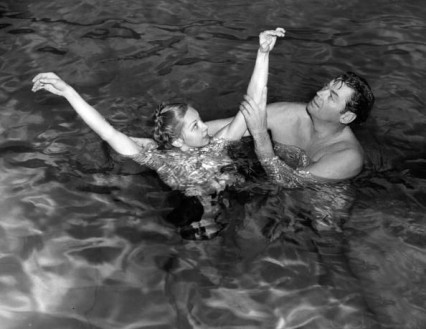
Johnny and Belita at Marshall Street. Weissmuller won five gold medals at the Olympics in 1924 and 1928, broke sixty seven world records and retired apparently never losing a race.
Although a trained ballet dancer, she took up professional ice-skating in America ostensibly for the money (probably on the advice of a very controlling mother). She was lured to Hollywood and appeared in several highly-profitable but low-budget films such as Suspense, Lady Let’s Dance and Silver Skates. She also became famous for her underwater swimming and performing in the first ever (and last?) underwater ballet.
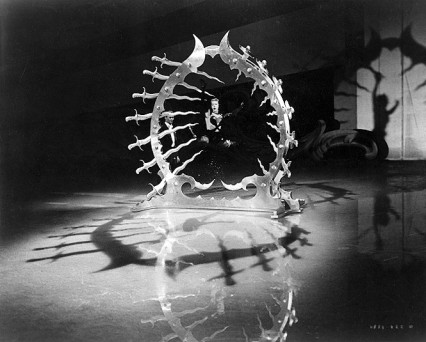
Belita in Suspense released in 1946. The director asked to her perform this particular move twice. She refused.
In the early 1950s there seemed to be a fashion for theatrical shows on ice and she became famous for her appearances in ice show spectaculars at the Empress Hall in London, starring with Max Wall, Norman Wisdom and Frankie Vaughan. She also had her own show, Champagne on Ice, put on at the London Hippodrome. After retiring, Belita died in the South of France in 2005.
In 1997 Westminster council decided to close down the historical Marshall Street baths for safety reasons. Originally they were going to demolish it completely but after being dissuaded, it is now due to be re-opened as part of a leisure centre, street-cleaning depot and an apartment block but with only the main pool remaining.
.
June Christy with Stan Kenton – Angel Eyes
